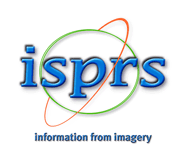Generative 3D Inpainting of Scene Using Diffusion Model
Keywords: cultural heritage, neural networks, diffuse network model, generative adversarial networks
Abstract. The reconstruction of partially destroyed buildings is a critical aspect of architectural preservation, disaster recovery, and urban planning. Accurate reconstruction not only aids in restoring the historical and cultural significance of structures but also plays a vital role in ensuring safety and functionality in urban environments. Traditional methods often struggle with incomplete data, necessitating the exploration of advanced techniques that can improve reconstruction accuracy and efficiency. In this paper, we propose a novel approach for 3D inpainting of partially destroyed models using a diffusion neural network, termed Restore3D. This method leverages the principles of diffusion processes to iteratively refine and reconstruct missing sections of 3D wireframe structures. By integrating temporal features into the inpainting process, Restore3D effectively captures the intricate details and spatial relationships within the models, providing a more holistic reconstruction compared to conventional techniques. Our experimental results demonstrate that Restore3D not only competes with but also outperforms modern baselines in 3D model inpainting tasks. The evaluation metrics indicate significant improvements in reconstruction fidelity and detail preservation, showcasing the potential of our approach in practical applications. The results highlight the effectiveness of leveraging deep learning techniques for complex reconstruction challenges. In conclusion, this study presents Restore3D as a promising method for the reconstruction of partially destroyed 3D models. The encouraging results underscore the potential of deep learning in enhancing reconstruction accuracy, paving the way for future research and application in architectural restoration and urban planning.





